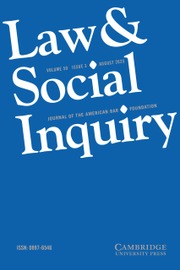No CrossRef data available.
Article contents
Remembering Internet Openness: From the Information Age to the Disinformation Era
Review products
Published online by Cambridge University Press: 06 November 2025
Abstract
Since the Internet’s mainstream inception in the mid-1990s, the global telecommunications network has transformed from one that offered egalitarian promise to a network that often compromises democratic norms. And, as its conceptual linchpin, Internet “openness” provided the potential for technological innovation that could revolutionize both communication and commerce. The regulatory schemes introduced in the early Internet era thus sought to advance openness and innovation in the fledging online world. But, while the times and technologies have since changed, the regulatory frameworks have largely remained the same. Accordingly, this review essay examines the Internet’s regulatory and cultural history to explore how the open values of the information age gave way to our current era of online disinformation. To do so, I reflect upon two early studies of the digital realm that have advanced discourse and scholarship on Internet openness: Lawrence Lessig’s Code: and Other Laws of Cyberspace, Version 2.0, and Christopher Kelty’s Two Bits: The Cultural Significance of Free Software. Informed by these works, along with related digital scholarship, this essay argues that remembering the history of Internet openness reveals how the free access ideals of the Internet’s foundational age have been transformed by the renewed proprietary conventions of our current disinformation era.
Information
- Type
- Review Essays
- Information
- Copyright
- © The Author(s), 2025. Published by Cambridge University Press on behalf of American Bar Foundation

